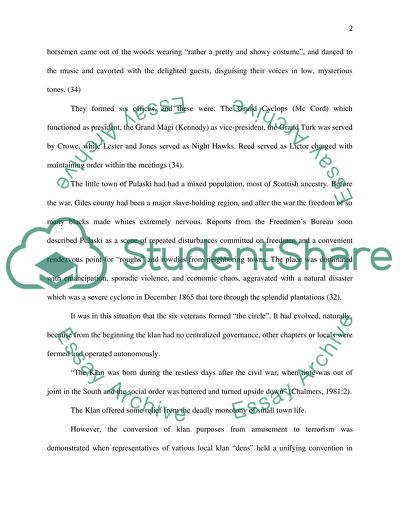Cite this document
(“Ku Klux Klan: Shrouded Brotherhood or Hooded Americanism Essay”, n.d.)
Ku Klux Klan: Shrouded Brotherhood or Hooded Americanism Essay. Retrieved from https://studentshare.org/history/1515940-ku-klux-klan-shrouded-brotherhood-or-hooded-americanism
Ku Klux Klan: Shrouded Brotherhood or Hooded Americanism Essay. Retrieved from https://studentshare.org/history/1515940-ku-klux-klan-shrouded-brotherhood-or-hooded-americanism
(Ku Klux Klan: Shrouded Brotherhood or Hooded Americanism Essay)
Ku Klux Klan: Shrouded Brotherhood or Hooded Americanism Essay. https://studentshare.org/history/1515940-ku-klux-klan-shrouded-brotherhood-or-hooded-americanism.
Ku Klux Klan: Shrouded Brotherhood or Hooded Americanism Essay. https://studentshare.org/history/1515940-ku-klux-klan-shrouded-brotherhood-or-hooded-americanism.
“Ku Klux Klan: Shrouded Brotherhood or Hooded Americanism Essay”, n.d. https://studentshare.org/history/1515940-ku-klux-klan-shrouded-brotherhood-or-hooded-americanism.


